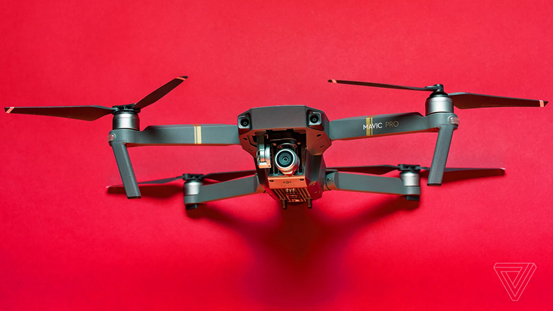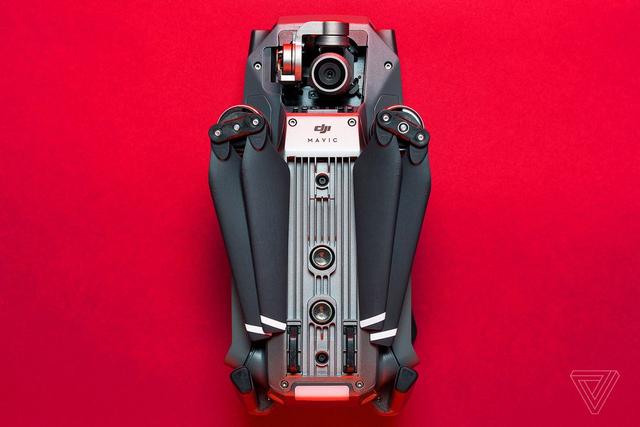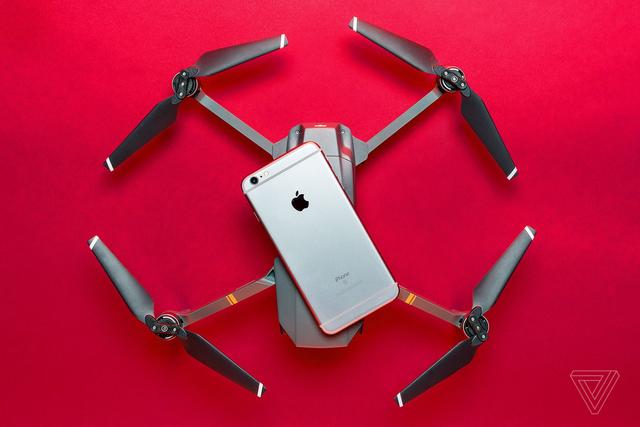
The Verge Chinese Station reported on November 7
Many people prefer small drones. After all, carrying a heavy, unmanned drone on the way to Lushan Mountain is obviously a big burden. In the past, choosing a small drone meant compromise on camera quality, flight mileage, endurance, and advanced features. However, the advent of Dajiang Mavic Pro changed all this.
The Mavic Pro at $6,499 is definitely one of the most portable drones on the market today, but even compared to a drone twice the size of its own, it is in endurance, image quality, mileage, and autonomous driving intelligence. The performance is not weak at all. This drone feels like it came from the desktop era to the notebook era. This inter-age transition has made Mavic Pro a casual, everyday drone, which is shared by other competitors. Unable to do it.

The smart design created Mavic Pro's petite figure. It uses four foldable wings, and the end of the rotor can also be folded. In this way, the space it occupies is not only very small, you do not have to remove the rotor in order to save space. In its complete state, Mavic Pro weighs only 743 grams.

The Mavic Pro's remote control is also much smaller than the competition, and is equivalent to an iPhone 6. Unlike the remote control before DJI, it has a small LCD display in the center of the fuselage, allowing you to view all the basic flight data, including distance, altitude, and direction, without opening the companion application. When the drone senses a strong wind or is too far from the starting point, the remote control can also send a vibration alert.
Mavic Pro is also the first drone in Xinjiang that can fly without the use of a remote control. You can use a small switch on the mob to switch the drone from radio mode to Wi-Fi mode, and then connect the mobile device to its Wi-Fi network and you can use the DJI application to control it. .
Although the app cannot provide all the fine-grained control options available on the remote control, Wi-Fi's effective distance is less than that of the radio, but this method is suitable for short-distance flight, especially when you want to further reduce the burden on equipment.
The third and most commendable feature of Mavic Pro is to allow users to combine the remote control and mobile phone. You can plug your phone into the bottom of the remote control to get real-time video transmission and more sophisticated automatic flight mode control and camera settings. At the same time, you can enjoy the fine flight control provided by the remote control.

The body design of Mavic Pro may be completely different from that of Djan’s flagship model Phantom, but both have a lot of similarities in components and software. Both use a face-down optical flow sensor to see the ground conditions so they can stabilize themselves in flight, even in weak winds. The optical flow sensor also allows the Mavic Pro to maintain its position in rooms without GPS signals. In addition, Mavic Pro also provides a "tripod mode" for indoor or narrow space flight.
Mavic Pro's camera and head are also very similar to Phantom, but they are smaller. Its camera uses the same sensor and can shoot 4k video and 12 megapixel still images, but the vision is not as big as Phantom. However, Mavic Pro does have the same front optical sensor as the Phantom 4 to detect obstacles and automatically avoid collisions. At the same time, it can also use computer vision technology to achieve gesture control. You can wave a hand to let him follow you, or use a pair of hands to take a photo frame to let him take pictures.
The Mavic Pro's camera system is slightly different from Phantom in focus mode. Although the latter's autofocus feature ensures the clarity of the image, the subject it shoots may not always be what you want. While Mavic Pro requires you to manually control the focus, this operation may be a bit tedious, but as long as you remember to focus when shooting, you can get the same clear and smooth image as Phantom.

Compared with Phantom 4, Mavic Pro's smaller size does create some disadvantages. In the unfolded state, Mavic Pro has only a few short feet at the bottom of the fuselage, which means that it requires more space for take-off and landing, and also avoids high grassland. These are Phantom users. There is no need to worry about it.
Mavic Pro's maximum flying speed can reach 40mph, and the video transmission effective distance is up to 7km, farther than Phantom. However, due to the small size of rotors and motors, its resistance to wind cannot be compared with large-sized drones.

Dajiang Mavic Pro proves to us that a small-sized drone can also perform well in all aspects. For professionals and filmmakers, it may not be too appealing, but if you are an average user, or even a professional who does not require a high level of shooting, Mavic Pro can be considered the new gold standard. Its balance between portability and performance is beyond the reach of other competitors. (Author: Ben Popper, the compiler: Eskimo)
Click to view original english
ã€The relevant rights in the Chinese language of The Verge's works in the United States are owned by Tencent Corporation. Without authorization, they may not be reproduced or excerpted. 】
Sound Tower Bluetooth,Tower Speaker For Tv,Best Bluetooth Tower Speaker,Bluetooth Tower Speaker Price
Newmax Electronics Co.,LTD , https://www.fspeaker.com